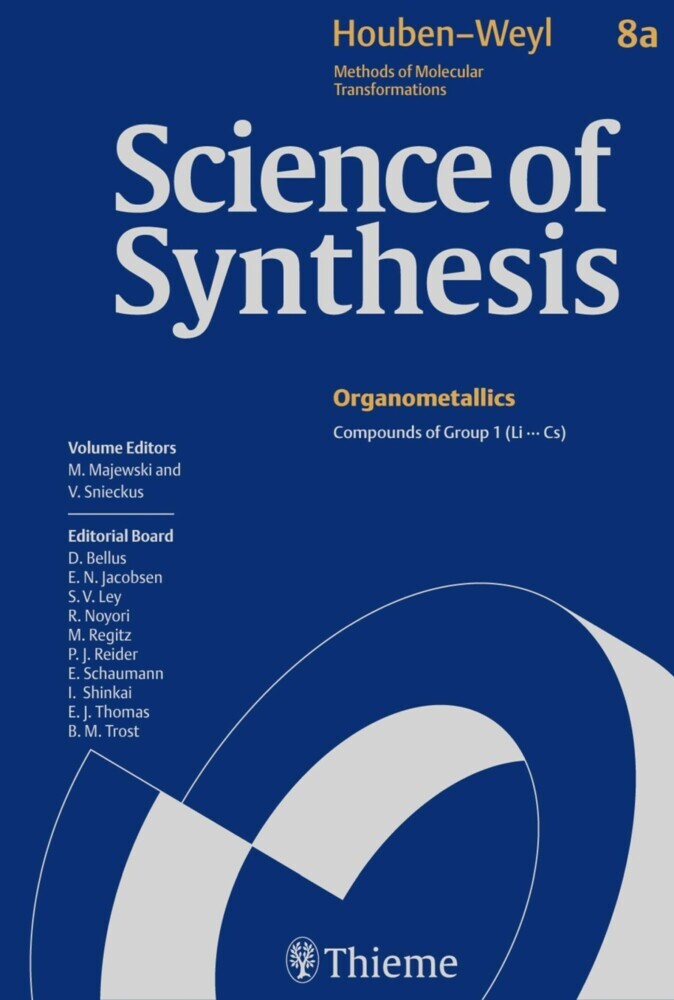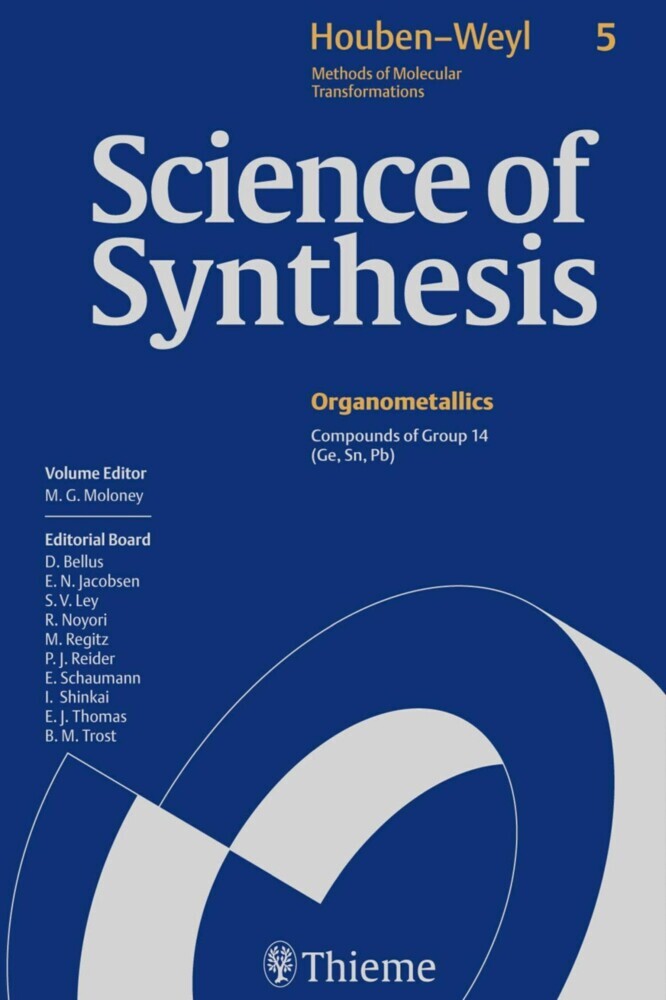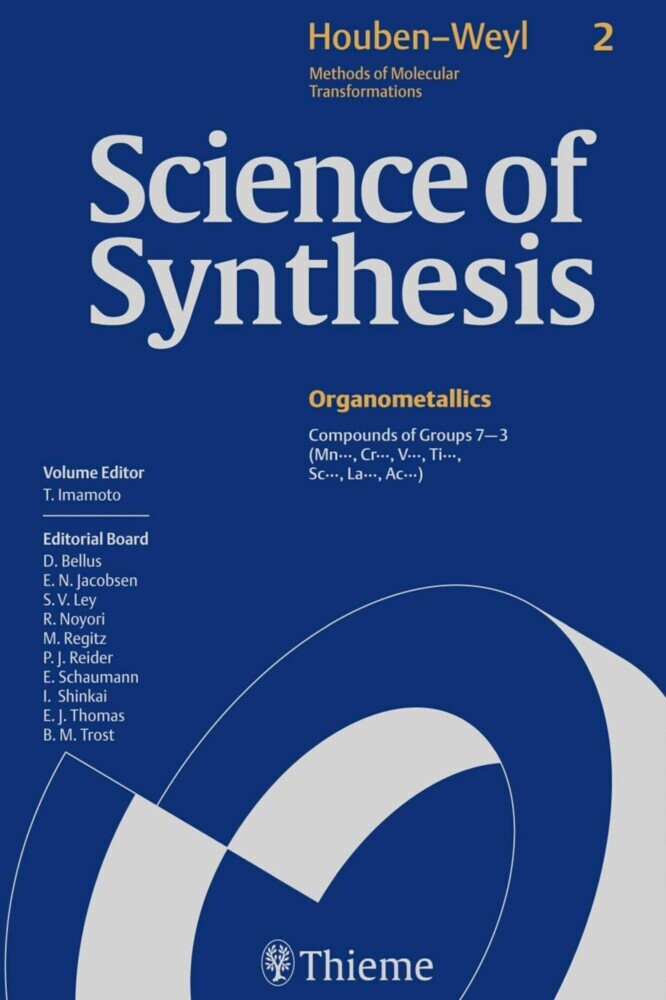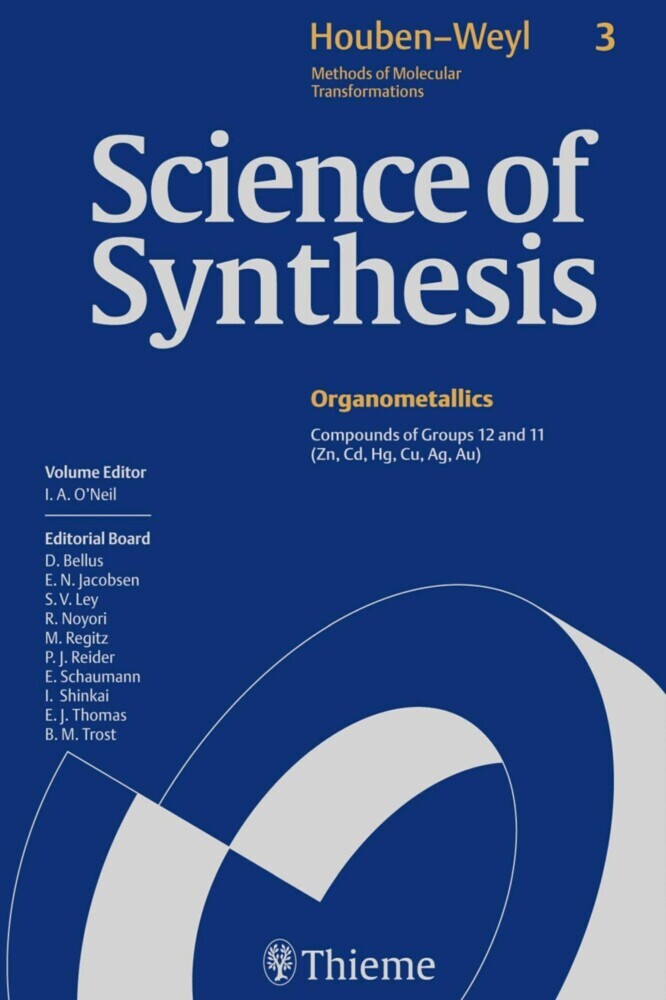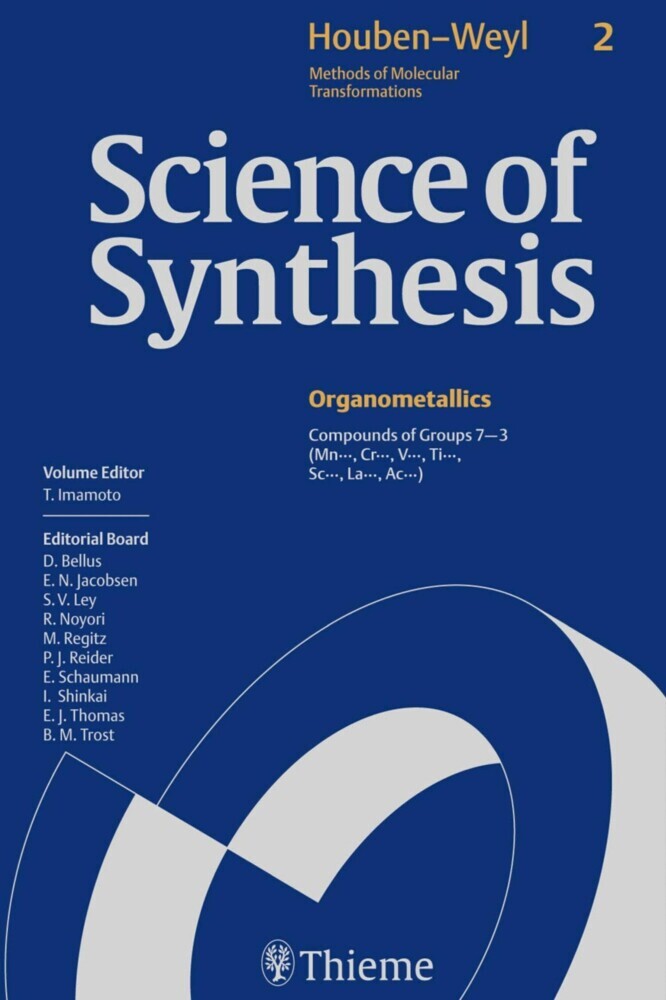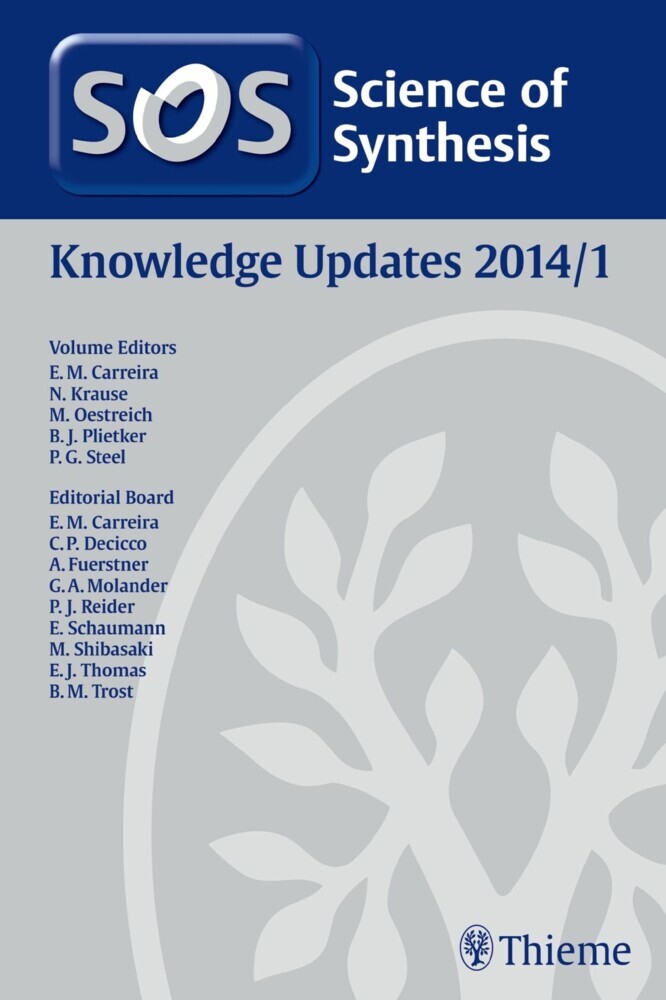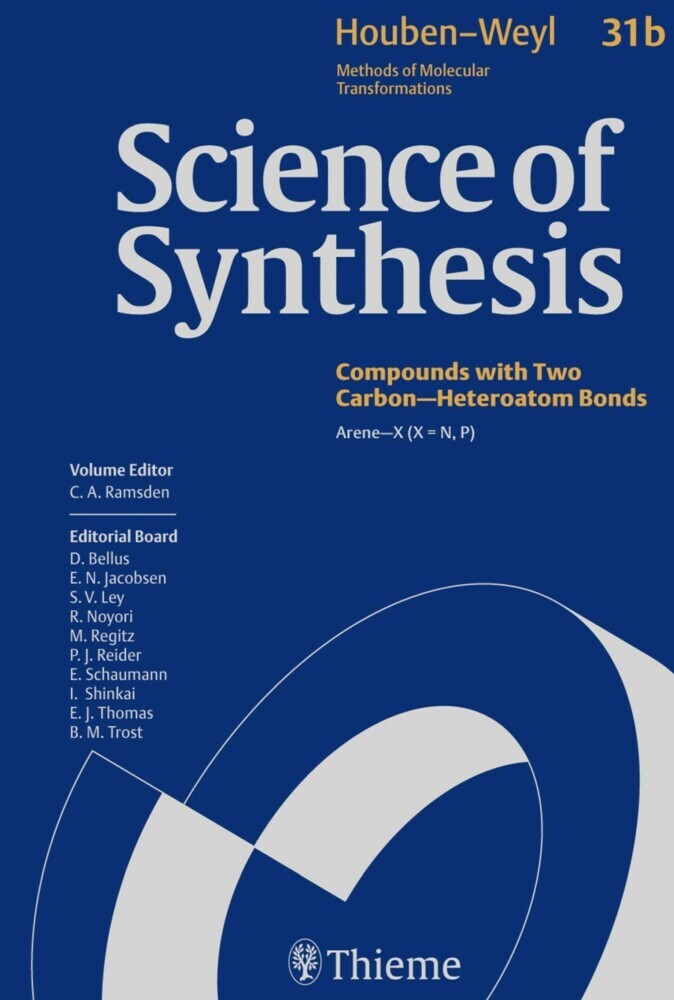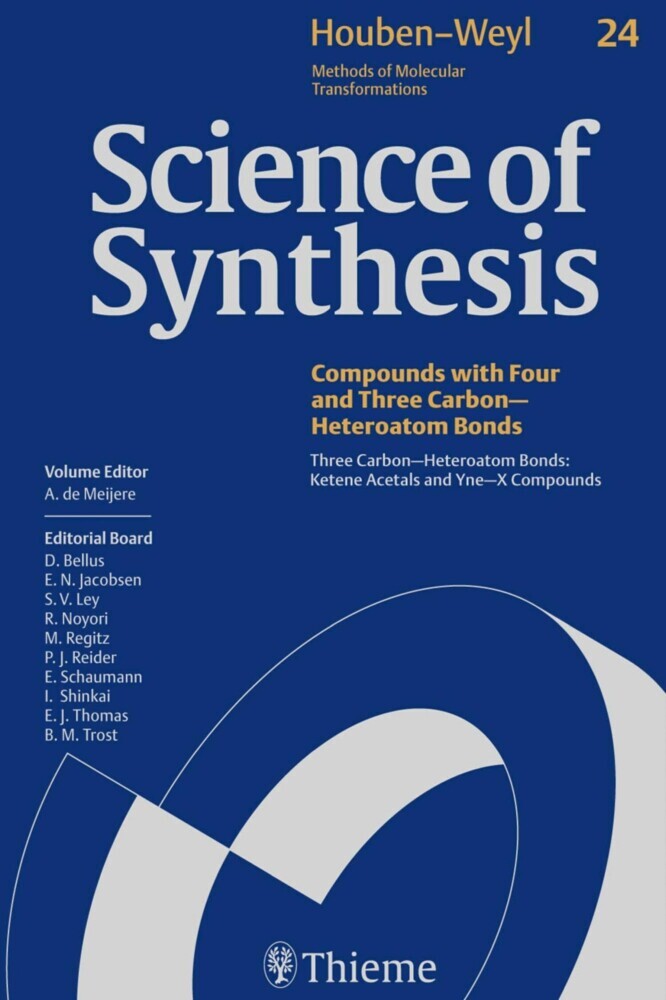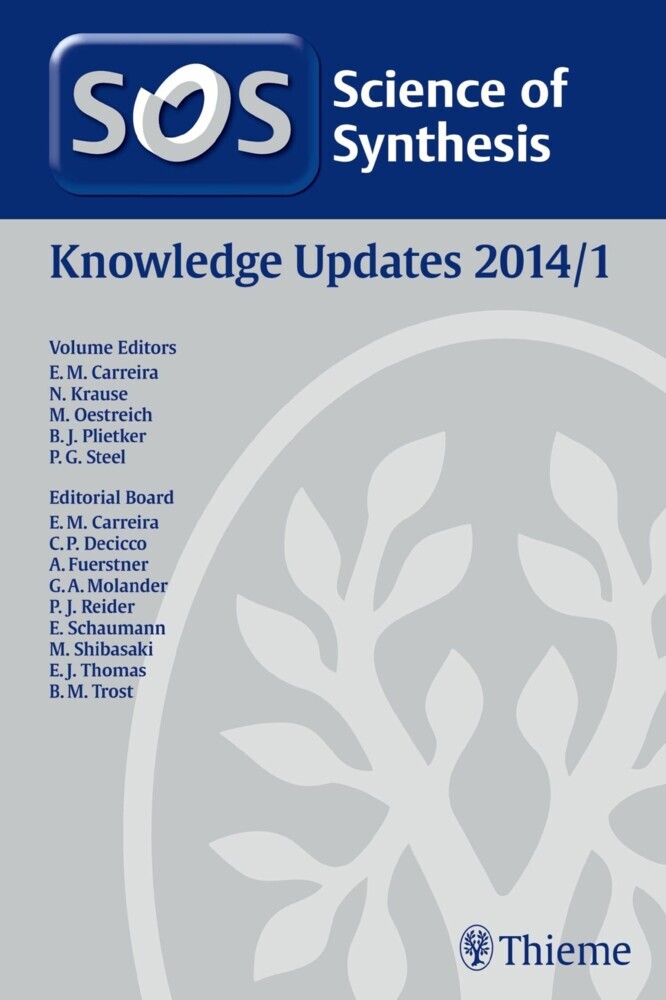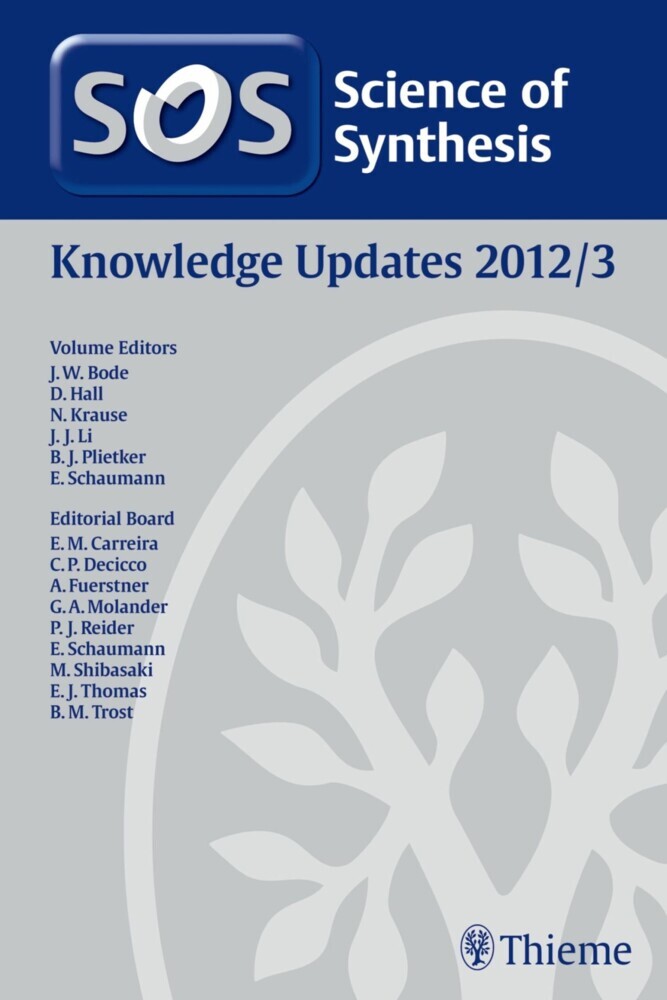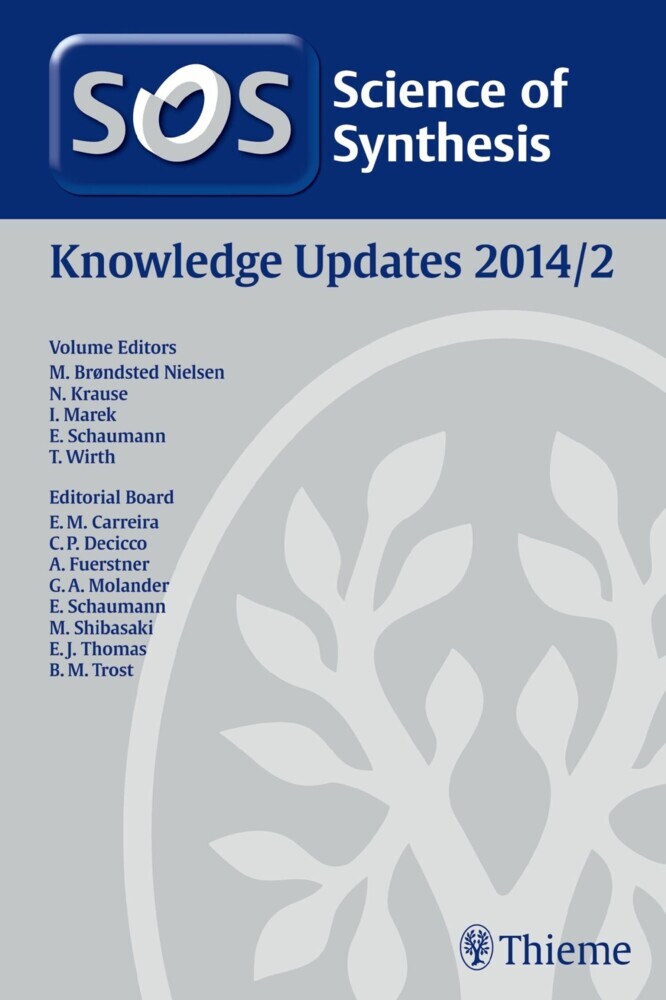Science of Synthesis: Houben-Weyl Methods of Molecular Transformations Vol. 8a
Compounds of Group 1 (Li...Cs)
Science of Synthesis: Houben-Weyl Methods of Molecular Transformations Vol. 8a
Compounds of Group 1 (Li...Cs)
Science of Synthesis: Houben-Weyl Methods of Molecular Transformations is the entirely new edition of the acclaimed reference series Houben-Weyl, the standard synthetic chemistry resource since 1909. This new edition is published in English and will comprise 48 volumes published between the years 2000 and 2008.
Science of Synthesis is a quality reference work developed by a highly esteemed editorial board to provide a comprehensive and critical selection of reliable organic and organometallic synthetic methods. This unique resource is designed to be the first point of reference when searching for a synthesis strategy.
- Contains the expertise of presently 400 leading chemists worldwide
- Critically evaluates the preparative applicability and significance of the synthetic methods
- Discusses relevant background information and provides detailed experimental procedures
For full information on the Science of Synthesis series, visit the Science of Synthesis Homepage
1;Science of Synthesis - Volume 8a: Compounds of Group 1 (Li...Cs);1 1.1;Title page;3 1.2;Imprint;5 1.3;Preface;6 1.4;Overview;12 1.5;Table of Contents;16 1.6;Introduction;36 1.7;8.1 Product Class 1: Lithium Compounds;40 1.7.1;8.1.1 Product Subclass 1: Lithium Metal;78 1.7.1.1;Applications of Product Subclass 1 in Organic Synthesis;79 1.7.1.1.1;8.1.1.1 Method 1: Synthesis of C--Li or Si--Li Groups and Their Reactions with Carbon Electrophiles;79 1.7.1.1.1.1;8.1.1.1.1 Variation 1: Reductive Halogen--Metal Exchange;79 1.7.1.1.1.2;8.1.1.1.2 Variation 2: Reductive Metalation of Carbon--Chalcogen and C--N Bonds;90 1.7.1.1.1.3;8.1.1.1.3 Variation 3: Reductive Metalation of Aryl C--H, Diarylmethylene C--H, Terminal Alkyne C--H, Vinyl C--H, C==C, and Strained C--C Bonds;100 1.7.1.1.2;8.1.1.2 Method 2: Synthesis of the C--Li Bond Followed by Protonation, Coupling, or Elimination;102 1.7.1.1.2.1;8.1.1.2.1 Variation 1: From Carbon--Heteroatom and Selected C--C Bonds;102 1.7.1.1.2.2;8.1.1.2.2 Variation 2: Birch Reductions;118 1.7.1.1.2.3;8.1.1.2.3 Variation 3: Heteroaromatic Birch Reductions;131 1.7.1.1.2.4;8.1.1.2.4 Variation 4: Styrenes, 1,3-Dienes, and Alkynes;136 1.7.1.1.3;8.1.1.3 Method 3: Synthesis of X--Li Bonds (X = O, N, S, P);142 1.7.1.1.3.1;8.1.1.3.1 Variation 1: Reductive Metalation of Alcohols, Amines, Thiols, Phosphines, and X--X Bonds;142 1.7.1.1.3.2;8.1.1.3.2 Variation 2: Reduction of C==O and C==N Bonds;144 1.7.1.1.3.3;8.1.1.3.3 Variation 3: Reduction of p-, Strained C--C, or C--X Bonds a to a Carbonyl Group;148 1.7.2;8.1.2 Product Subclass 2: Lithium Hydride;168 1.7.2.1;Applications of Product Subclass 2 in Organic Synthesis;168 1.7.2.1.1;8.1.2.1 Method 1: Reactions as a Base;168 1.7.2.1.2;8.1.2.2 Method 2: Superactive Lithium Hydride;169 1.7.2.1.3;8.1.2.3 Method 3: Other Lithium Hydride Activation Methods;170 1.7.3;8.1.3 Product Subclass 3: Lithium Halides, Lithium Cyanide, and Related Salts;174 1.7.3.1;Applications of Product Subclass 3 in Organic Synthesis;174 1.7.3.1.1;8.1.3.1 Method 1: Organic Salt Solutions as Reaction Media;174 1.7.3.1.2;8.1.3.2 Method 2: Effects on Main Group Organometallic Chemistry;175 1.7.3.1.2.1;8.1.3.2.1 Variation 1: Salt Effects in Enolate and Similar Chemistry;176 1.7.3.1.2.2;8.1.3.2.2 Variation 2: Protonation of Enolates;179 1.7.3.1.2.3;8.1.3.2.3 Variation 3: Lithium Salt Effects in Grignard Chemistry;180 1.7.3.1.3;8.1.3.3 Method 3: Effects on Transition-Metal Chemistry;181 1.7.3.1.3.1;8.1.3.3.1 Variation 1: Palladium-Catalyzed Reactions;182 1.7.3.1.3.2;8.1.3.3.2 Variation 2: Organocopper Reactions;183 1.7.3.1.3.3;8.1.3.3.3 Variation 3: Reactions of Other Transition Metals;184 1.7.3.1.4;8.1.3.4 Method 4: Addition Reactions;184 1.7.3.1.4.1;8.1.3.4.1 Variation 1: Cycloaddition Reactions;184 1.7.3.1.4.2;8.1.3.4.2 Variation 2: Addition to Carbonyl Compounds;186 1.7.3.1.4.3;8.1.3.4.3 Variation 3: Miscellaneous Additions;188 1.7.3.1.5;8.1.3.5 Method 5: Single-Bond Cleavage Reactions;188 1.7.3.1.6;8.1.3.6 Method 6: Condensation Reactions;191 1.7.3.1.7;8.1.3.7 Method 7: Elimination Reactions;193 1.7.3.1.8;8.1.3.8 Method 8: Hydride Reductions;193 1.7.3.1.9;8.1.3.9 Method 9: Lithium Salts as Sources for Halogens or Cyanide;194 1.7.4;8.1.4 Product Subclass 4: Lithium--Oxygen Compounds;200 1.7.4.1;Applications of Product Subclass 4 in Organic Synthesis;200 1.7.4.1.1;8.1.4.1 Method 1: Reactions Using Lithium Hydroxide;200 1.7.4.1.2;8.1.4.2 Method 2: Reactions Using Lithium Carbonate;201 1.7.4.1.3;8.1.4.3 Method 3: Use of Lithium Hydroperoxide and Related Reagents;201 1.7.4.1.4;8.1.4.4 Method 4: Reactions Using Lithium Acetate;202 1.7.4.1.5;8.1.4.5 Method 5: Reactions Using Lithium Alkoxides;203 1.7.4.1.5.1;8.1.4.5.1 Variation 1: Elimination and Condensation Reactions;203 1.7.4.1.5.2;8.1.4.5.2 Variation 2: Oxidation Reactions with Copper(II) Bromide--Lithium tert-Butoxide;204 1.7.5;8.1.5 Product Subclass 5: Lithium--Sulfur, --Selenium, and --Tellurium Comp
| ISBN | 9783131717818 |
|---|---|
| Artikelnummer | 9783131717818 |
| Medientyp | E-Book - PDF |
| Copyrightjahr | 2014 |
| Verlag | Georg Thieme Verlag KG |
| Umfang | 952 Seiten |
| Sprache | Englisch |
| Kopierschutz | Digitales Wasserzeichen |

